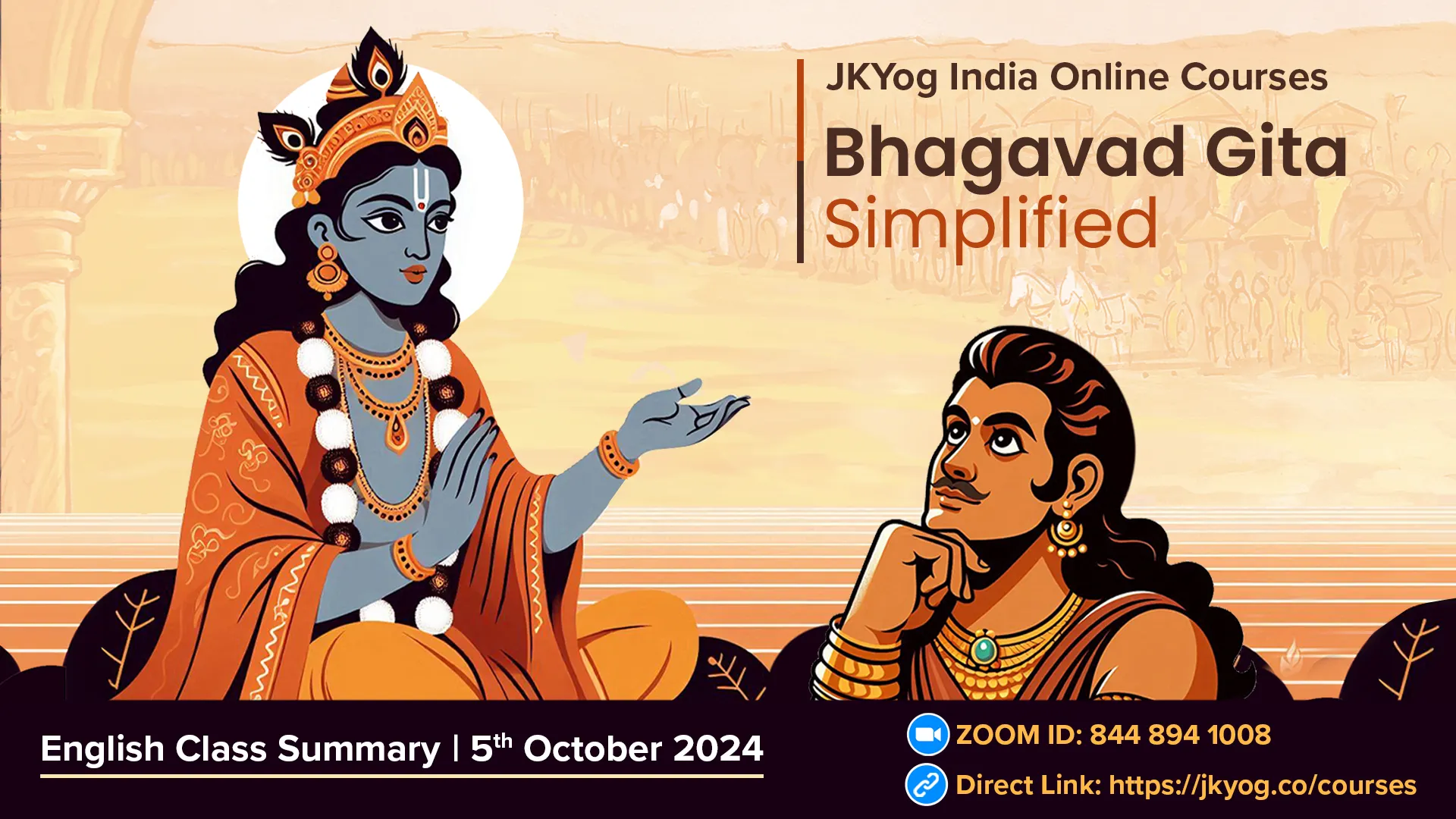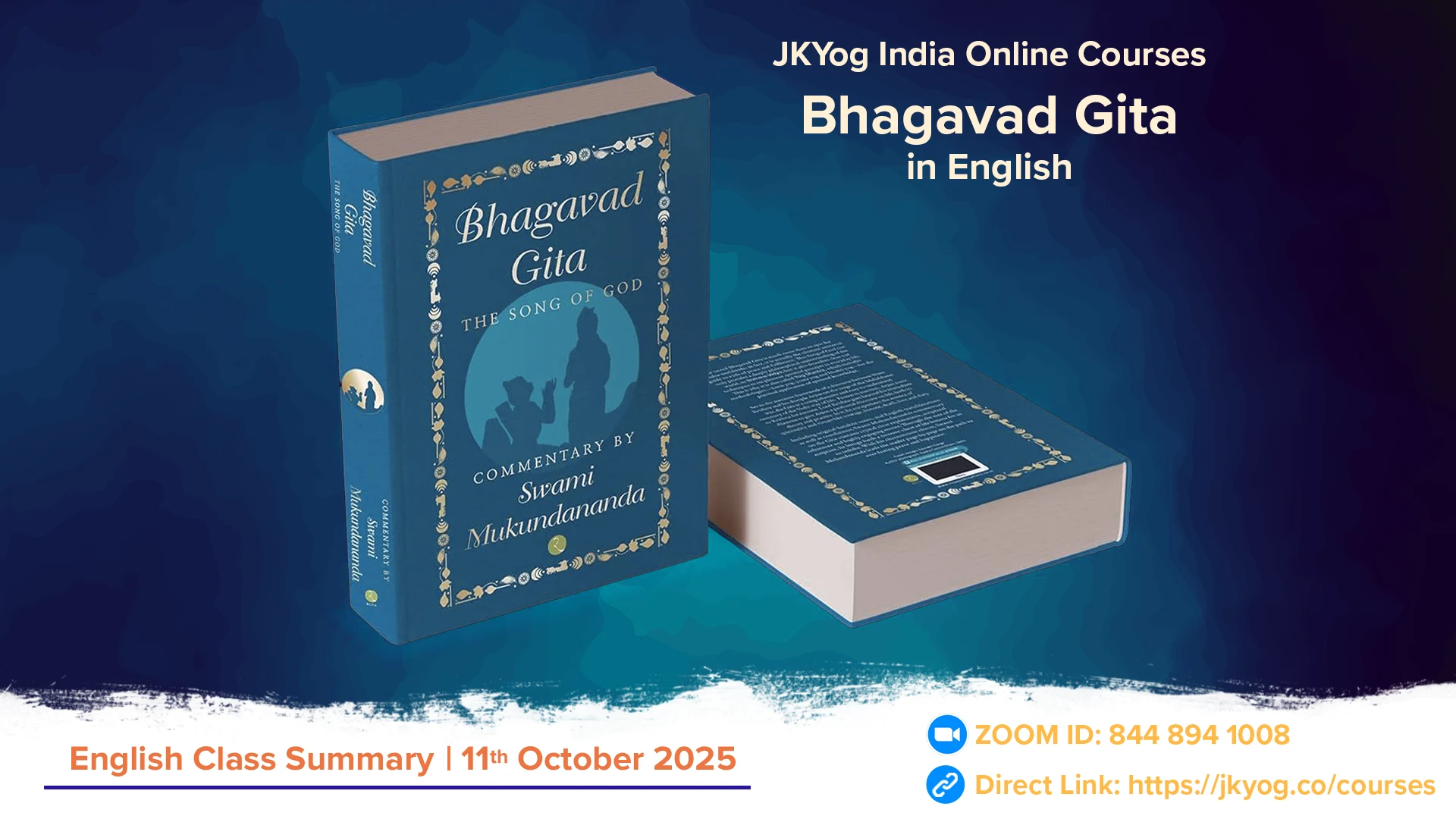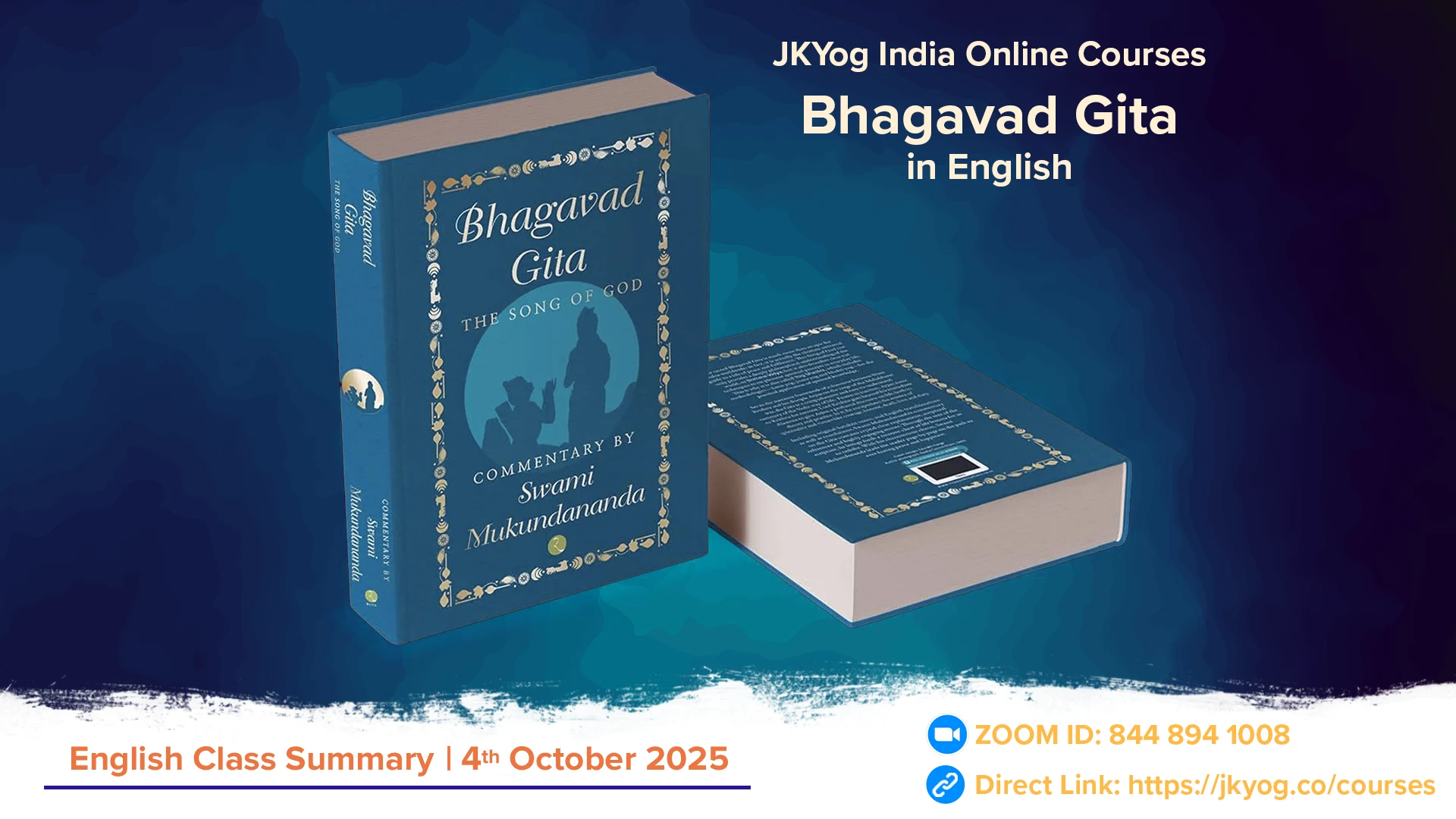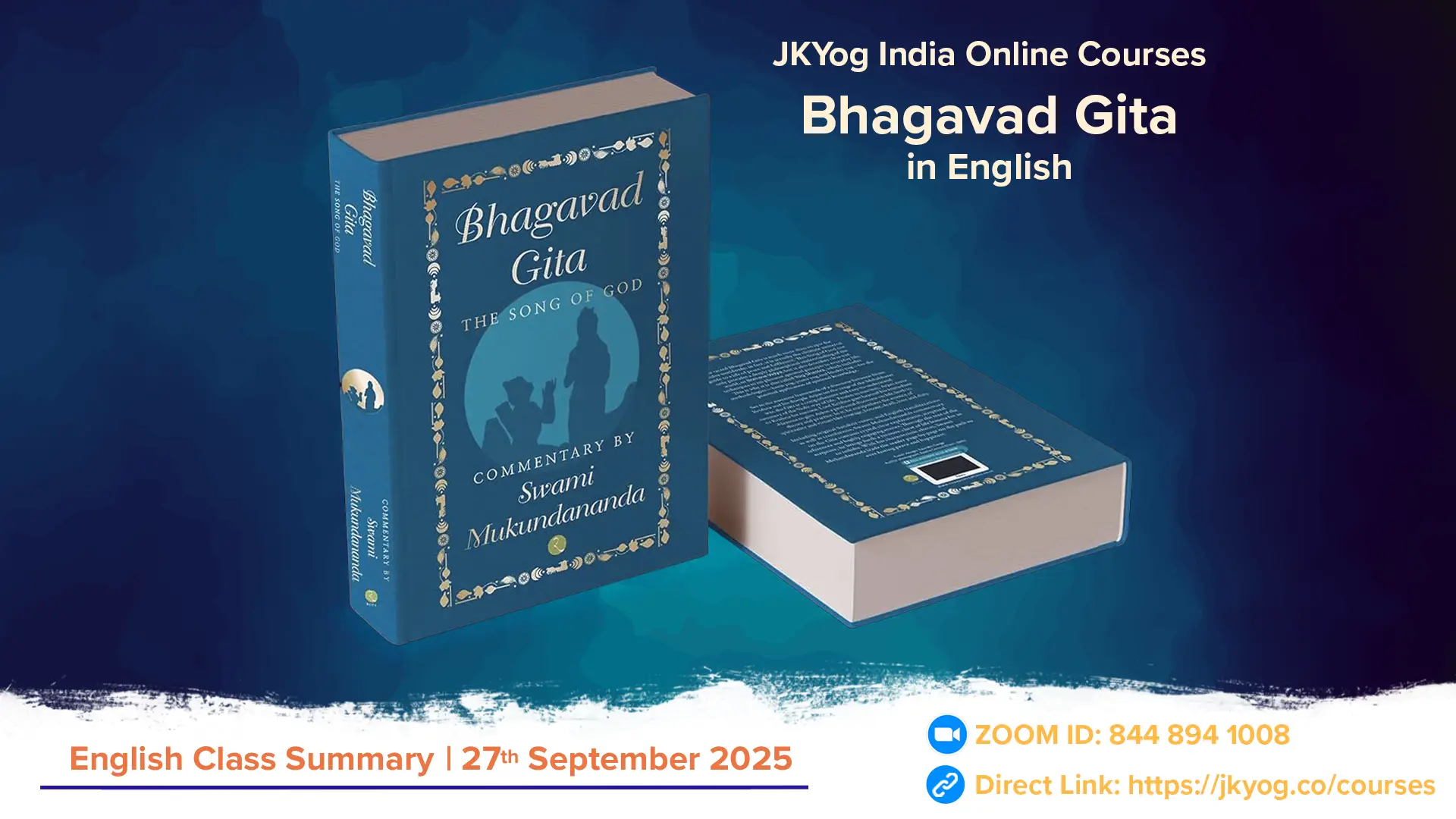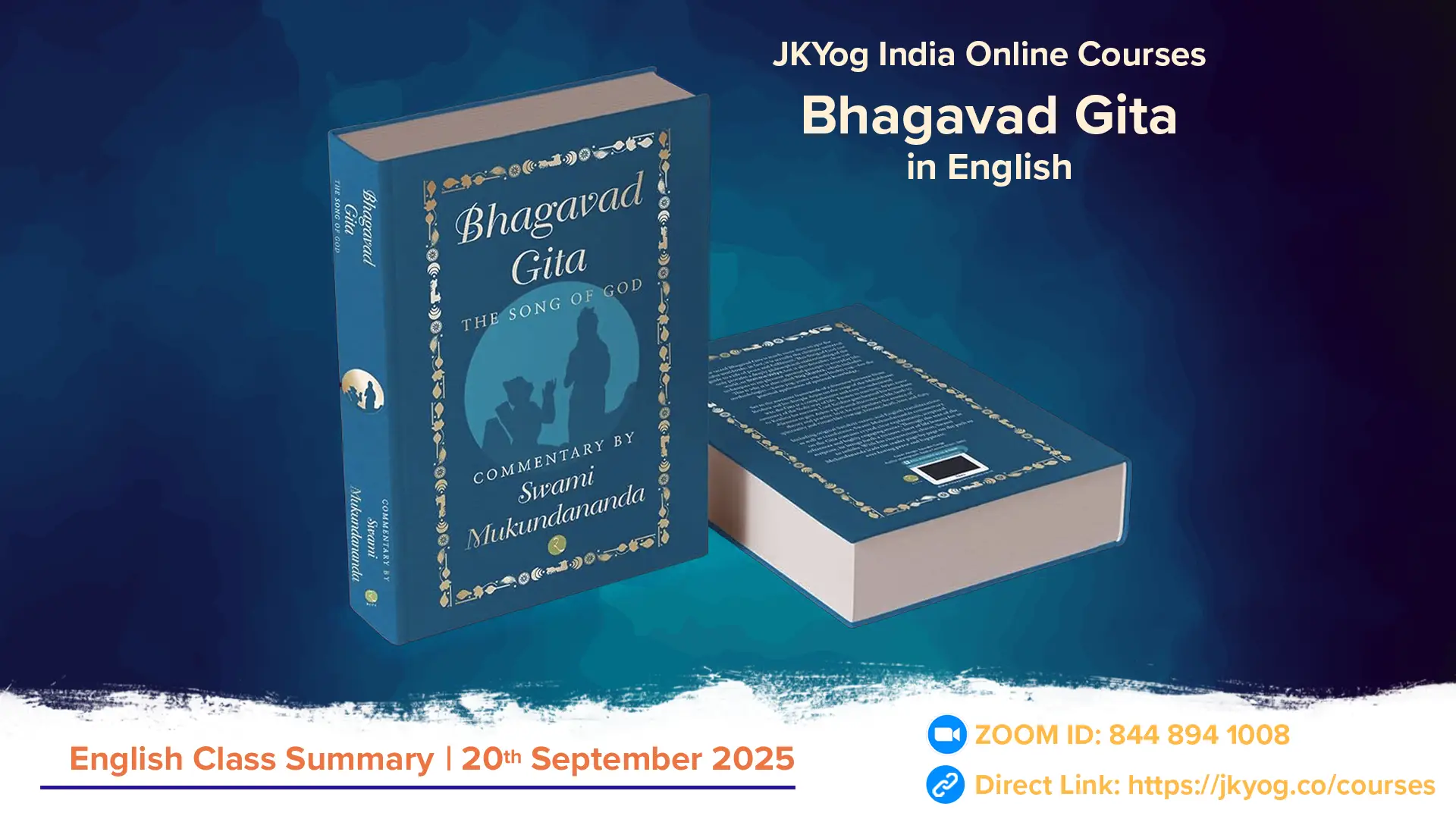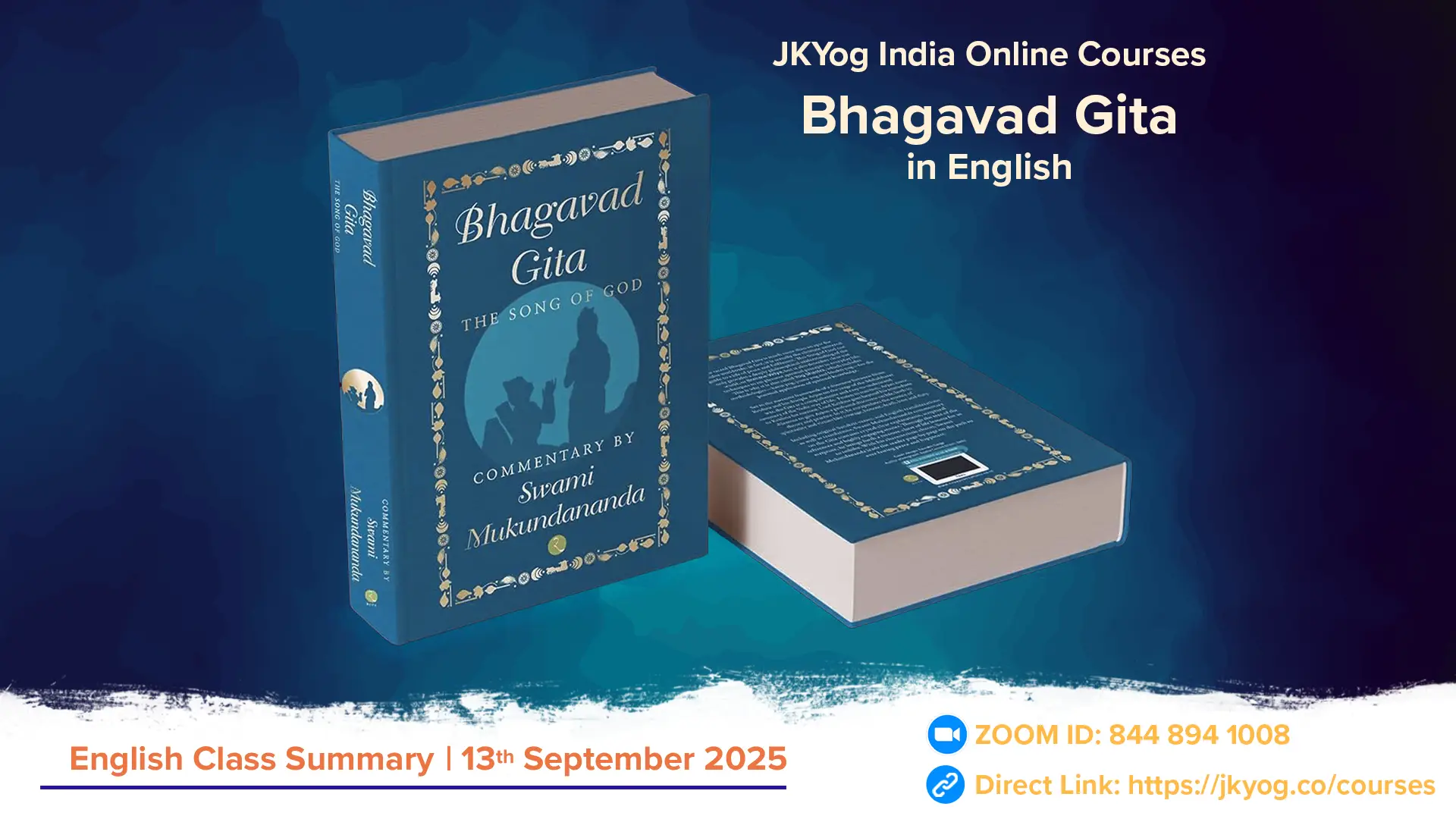In Class 17 of the Bhagavad GitaShree Krishna delves into profound concepts that explain the nature of the material world, the soul’s bondage to desires, and the path to ultimate liberation. He uses the metaphor of an inverted tree to describe the transient and illusory nature of worldly existence, where the soul becomes entangled in an endless cycle of birth and death due to attachment to material desires. The focus of the teachings is on realising the eternal truth, cutting the bonds of attachment, and surrendering to the Supreme Divine Personality, Purushottam, to transcend the limitations of the material world.
This session provides clarity on the fundamental nature of both perishable and imperishable souls, the eternal struggle with materialism, and the steps toward liberation, thus guiding us on how to break free from the karmic cycle and achieve eternal union with the divine.
This session provides clarity on the fundamental nature of both perishable and imperishable souls, the eternal struggle with materialism, and the steps toward liberation, thus guiding us on how to break free from the karmic cycle and achieve eternal union with the divine.
Material World as an Inverted Tree
Shree Krishna explains that the material world is like an Aśhvattha (sacred fig) tree, inverted, with its roots reaching upwards toward the divine and its branches extending downwards into the material world. The roots symbolise the connection to the divine, and the branches represent the various life forms, constantly shifting and evolving, reflecting the ever-changing nature of sansar.
- संसार: संसरतिति संसारः, "that which is constantly shifting."
- जगत: गच्छतिति जगत, "the evermoving world."
Although the world and its experiences are transient and impermanent, the soul, unaware of this reality, becomes trapped in the endless cycle of birth, death, and rebirth, continuously seeking fulfilment in the material realm.
The Soul Entangled by Attachment
The soul, due to ignorance and attachment to material desires, becomes entangled in the material world. This attachment causes the soul to mistakenly identify with the body, losing sight of its true spiritual nature.
ममैवांशो जीवलोके जीवभूतः सनातनः |
मनःषष्ठानीन्द्रियाणि प्रकृतिस्थानि कर्षति ||
“The souls in this material world are My eternal fragmental parts. Bound by material nature, they struggle with the six senses, including the mind.” (BG 15.7)
Chaitanya Mahaprabhu also emphasises that the soul's forgetfulness of its divine origin subjects it to material sufferings:
कृष्ण भुलि 'सेइ जीव अनादिबहिर्मुख |
अतएव माया तारे देया संसारदुःख ||
"Since the soul has forgotten God from time immemorial, it is subjected to worldly miseries by Maya." (CC ML 20.117118)
The soul, being attached to material desires, continuously experiences ups and downs, moving between higher and lower realms but never attaining true liberation. The world lures the soul with the objects of the senses, leading to the growth of desires. Fulfilled desires give rise to greed, while obstructed desires cause anger. These emotions cloud the intellect, further deepening the soul’s ignorance and attachment to the material realm, strengthening the tree of material existence.
Breaking Free from the Cycle
Shree Krishna outlines the path to liberation by first cutting the roots of desire and attachment with the "axe of detachment." Understanding one’s true spiritual nature beyond the body and material desires is key to transcending the cycle of birth and death.
- Detachment: Severing ties to material desires and attachments.
- Self Realisation: Realizing that the soul is eternal and distinct from the material body.
- Cessation of Material Desires: Recognizing that material desires cannot lead to lasting happiness helps cultivate detachment, stopping the growth of the tree.
The next step starts with cutting down the symbolic tree of material life at its base to transcend worldly existence and return to the divine origin, which is the Supreme Lord.
Divine Origin and Purushottam
Shree Krishna reveals that He is the Purushottam, the Supreme Divine Personality, who is beyond both the perishable and imperishable aspects of creation.
Divine Origin and Purushottam
Shree Krishna reveals that He is the Purushottam, the Supreme Divine Personality, who is beyond both the perishable and imperishable aspects of creation.
यस्मात् क्षरमतीतोऽहमक्षरादपि चोत्तमः |
अतोऽस्मि लोके वेदे च प्रथितः पुरुषोत्तमः ||
“I am transcendental to both the perishable world of matter and even to the imperishable soul; thus, I am celebrated as the Supreme Divine Personality in the Vedas.” (BG 15.18) Shree Krishna emphasises that the search for the ultimate truth lies in reaching out to Him, the eternal source of all creation.
Kṣhar and Akṣhar: Perishable and Imperishable Souls
There are two categories of being in existence:
- Kṣhar (Perishable): All beings in the material world, bound by the cycle of life and death, are perishable.
- Akṣhar (Imperishable): Liberated souls, free from rebirth, reside eternally in the divine realm of God.
While all souls are eternal, those in the material realm are subjected to the influence of Maya, leading them to repeated cycles of birth and death.
The Divine Abode of God
Shree Krishna describes His divine abode as a realm that is beyond the influence of the material world. It is eternal, illuminated by divine light, and free from the defects of the material realm. Souls who reach this abode are liberated from the cycle of birth and death.
न तद्भासयते सूर्यो न शशाङ्को न पावकः |
यद्गत्वा न निवर्तन्ते तद्धाम परमं मम ||
"Neither the sun nor the moon nor fire can illuminate that Supreme Abode of Mine. Having gone there, one never returns to this material world again." (BG 15.6)
Surrendering to God
True liberation is only possible through surrender to God. By realising Shree Krishna as the Purushottam (Supreme Divine Personality) and aligning one’s soul with His divine will, one can achieve complete knowledge and eternal peace.
यो मामेवमसम्मूढो जानाति पुरुषोत्तमम् |
स सर्वविद्भजति मां सर्वभावेन भारत ||
“One who knows Me without doubt as the Supreme Divine Personality has complete knowledge and worships Me with all their being.” (BG 15.19)
This surrender enables the soul to transcend the material world and reside eternally in the divine abode of God.
This surrender enables the soul to transcend the material world and reside eternally in the divine abode of God.
Key Learnings
- Material World as an Inverted Tree: The material world is temporary and ever-changing, symbolised as an upside-down tree rooted in the divine.
- The Soul’s Entanglement: Souls are trapped in the cycle of birth and death due to attachment to material desires and ignorance of their true spiritual nature.
- Breaking Free: Liberation begins with detachment, self-realisation, and cutting off desires to transcend worldly existence.
- Divine Abode: Through surrender to God, one can attain the divine realm and escape the cycle of birth and death.
Summary: JKYog India Online Class- Bhagavad Gita Simplified [English]- 5th October 2024

